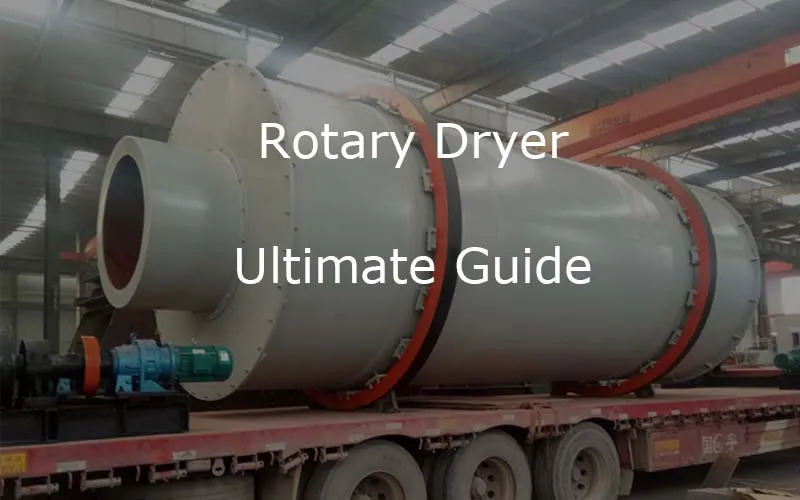
Dryer Machine: The Ultimate Buying Guide
This is a comprehensive buying guide on dryer machines, but more specifically, we will be talking about the rotary dryer machine. So if you have been planning to purchase a dryer machine, this will be your ultimate guide. Just briefly, below is what we will be covering throughout the article:
Table of Content
- What is a Rotary Dryer Machine?
- How Does a Rotary Dryer Machine Work?
- The Principle Behind the Rotary Dryer Machine
- Types of Dryer Machines
- Rotary Kilns Vs. Rotary Dryers: What’s The Difference?
- Difference Between the Rotary Dryer and Centrifugal Dryer
- Benefits of Using a Rotary Dryer
- Frequently Asked Questions
- Introducing the Tcpel Rotary Dryer Machine
- Bottom Line
What is a Rotary Dryer Machine?
A rotary dryer is a machine specifically designed to reduce material moisture content through direct contact with a heated gas.
Dryer machines are made up of cylindrical tubes that are supported by either steel beams or concrete columns. Usually, a rotary dryer machine slopes slightly to make the discharge end lower than your material feed end.
When you put the material you want to dry in a rotary dryer machine, the dryer machine will start rotating. The material will then be lifted by various internal fins of the rotary dryer.
When the rotary dryer’s material is high enough to roll back, it will fall back to the rotary dryer’s bottom while passing through the hot gas.
Rotary dryers are best for drying both metallic and non-metallic materials, clay, and coal slime. The beauty of rotary dryers is that they can be used to dry different materials apart from the ones listed above. Besides, rotary dryers are relatively straightforward to use.
How Does a Rotary Dryer Machine Work?
Rotary dryers tumble materials in a rotating drum while making fair use of drying air. To make this process run smooth, the drum is slanted horizontally to allow gravitational push to move the materials. But that’s not the only way you can use a rotary dryer. In some cases, you can indirectly heat the rotary dryer so that it doesn’t get into contact with the material.
While the drum rotates, the materials are picked up and dropped into the air stream by the lifting flights to ensure a good heat transfer. There is usually the added advantage of polishing and rounding the granules even better if you work with agglomerates.
Few things to keep in mind is that when drying materials using a rotary dryer, the materials will always move as the cylinder rotates. Additionally, as the material is being dried, it will always fall from the high-end to the low-end. Even more, the rotary dryer features copy boards that aids in raising the material to maximize the contact between the material and the hot air.
Once the drying is complete, you can collect the finer particles using the dust collector, while exhaust gas does its job of collecting dust.
The Principle Behind the Rotary Dryer Machine
While we have talked about how the rotary dryer machine works, it is also essential to explain the principle behind how a rotary dryer works.
First, wet material is sent to the hopper by the belt conveyor or the bucket elevator, and then the feeder through the hopper enters the feeding port through the feeding pipe.
The feeding pipe’s inclination should be greater than the natural inclination of the material to smoothly flow into the dryer. The rotary dryer adopts a direct flow type of heating with a heat source from the firing unit.
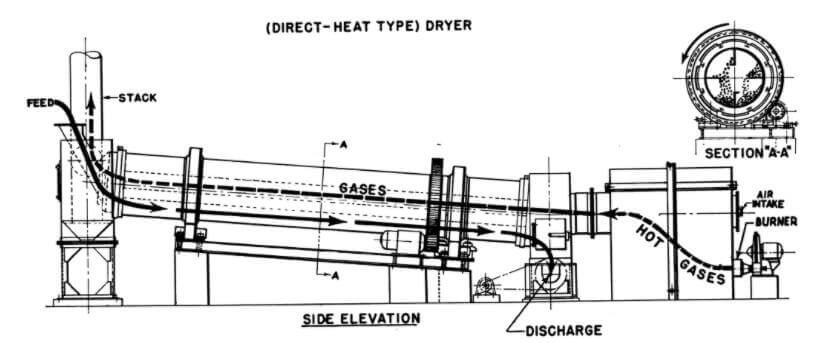
The material to be dried is pushed back immediately by the lifter board when it enters the shell from the feeding tank and feeding chute.
Because the drier is installed in the slope, material flows to the back end under gravity and rotation force; meanwhile, it is repeatedly lifted by the board and thrown down accordingly, making the material form an even curtain and exchange heat sufficiently within the heat flow.
In the end, moisture on the surface and inner of the material is dried by repeatedly scattering.
Types of Dryer Machines
We live in a world where nearly every process has been simplified, and that is why you are right to expect that there are different types of dryer machines.
In this section, we will be discussing the different types of dryer machines. Remember that our primary focus is the rotary dryer machine, but there’s still a need to go through the different types of dryers available.
The principles behind the rotary dryer machine’s working will also apply to any of the dryers we will be discussing in this section.
You will run into some calculation problems in some cases because conditions may change when the drying solids and air move along with your dryer.
However, that shouldn’t worry you because you can maneuver your ways once you know the principles of heat and mass balances.
That said, let’s go through some of the different types of dryer machines, shall we?
1. Rotary Dryers
Rotary dryers are drying machines that aim to reduce the moisture content in any material. They consist of cylindrical tubes that are supported by steel beams or concrete columns.
To start using a rotary dryer machine, you will need to tumble the material you want to dry into the rotary dryer drum. Once that is done, the material will be pushed from the high-end to the low-end to increase its contact with the drying air.
Types of Rotary Dryers
There are many dryers, but we also have some rotary dryer classifications:
- Indirect steam-tube dryer
- Direct Roto-Louvre dryer
- Direct rotary dryer
- Indirect rotary calciner
- Direct rotary kiln
Out of the other types of rotary dryers we have listed above, the most popular one is the direct rotary dryer. The others are only known to exist, but little has been published about them.
2. Tunnel Dryers
Most people will assume that tunnel dryers are developments of the tray dryers, and they could be right. When drying materials using a tunnel dryer, the material will move parallel to the airflow. You may realize that the dryers have been divided up, or the cross-flows are being used in some cases.
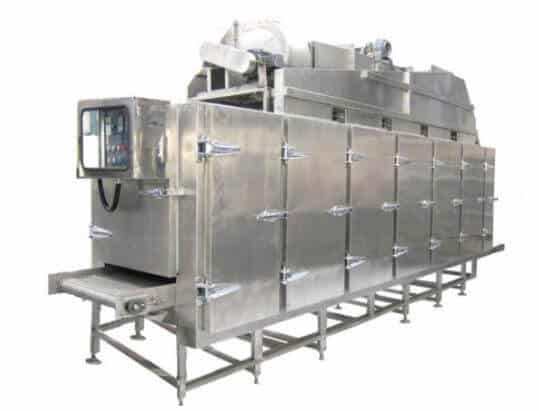
3. Roller or Drum Dryers
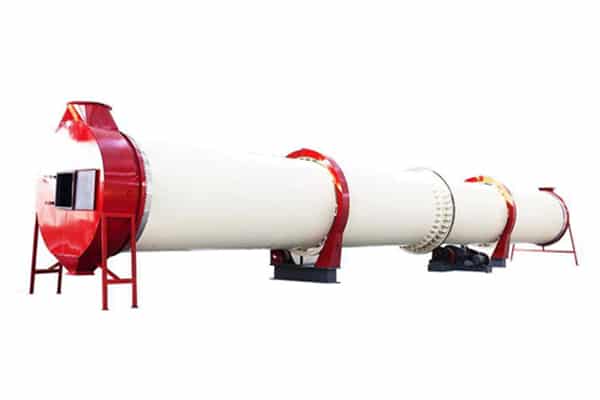
In roller or drum dryers, the material is put in the heated drum surface, and the drum will start to rotate. As the drum rotates, the material will be applied to the dryer drum for every cycle. The material will remain in the drum during the rotation process as the drying occurs. That said, drum drying can also be referred to as conduction drying.
4. Fluidized Bed Dryers
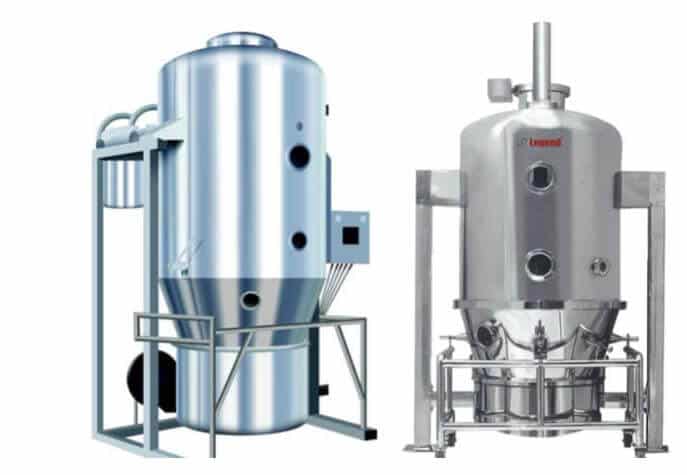
When using the fluidized bed dryers, the material being dried will get suspended against gravitational force. In some cases, horizontal airflow may be applied to move the material through your dryer. During this process, the material receives the heat through convection, making it dry.
5. Spray Dryers
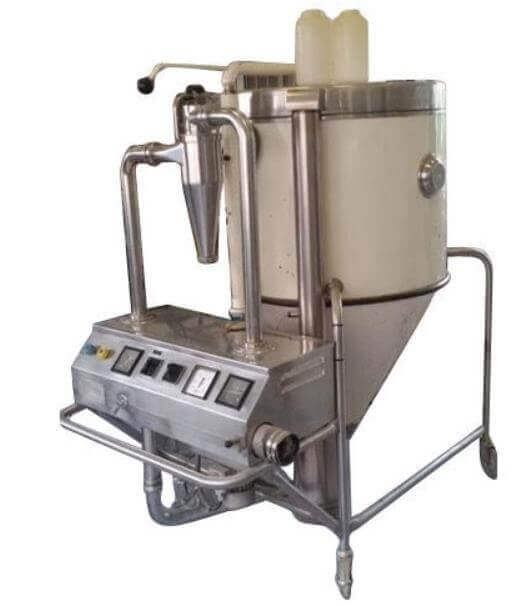
When using the spray dryers, spray the liquid into heated air, in which the solids and air will move either in parallel or counterflow directions.
Spray dry dryer materials very fast, so it is a type of dryer machine that will come in handy for materials that could get damaged quite quickly when exposed to heat for a longer time.
The beauty about the spray dryers is that the dried materials will settle when they are drying without them coming into contact with the dryer walls, thus preventing them from sticking.
6. Pneumatic Dryers
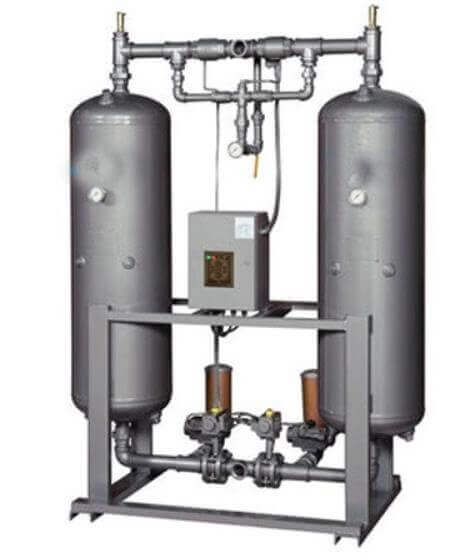
When using the pneumatic dryer, the materials will be moved fast in an airstream while the air currents maintain suspension materials. The heated air is responsible for drying the air, but some form of classifying device is included in the dryer. The material is dried and separated in the classifier, then passed out, while the moist material parts are recirculated to be dried further.
7. Tray Dryers
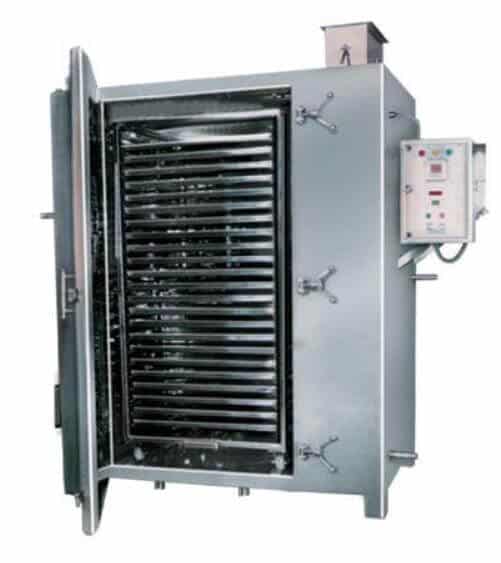
A tray dryer is a drying machine with enclosed and insulated trays and chambers on top of each other, forming a trolley. In-tray dryers, materials being dried are put on trays where they are dried. The drying of the materials takes place through air currents going through the trays or by radiation.
8.Trough Dryers
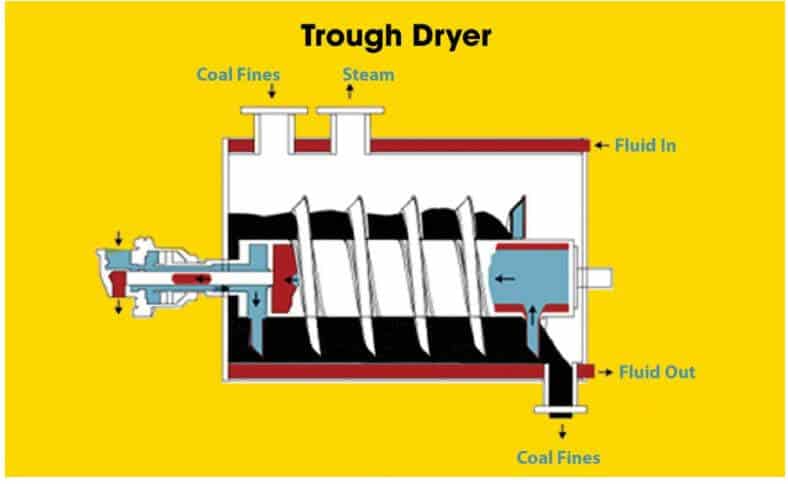
Trough dryers are suited for quick drying of parts that have been cleaned and rinsed. Once the heating elements are warm, they go through the ducts to the sections that need to be dried. Harsh dryers can dry fast and intensively, especially when drying adherent moisture materials.
9. Bin Dryers
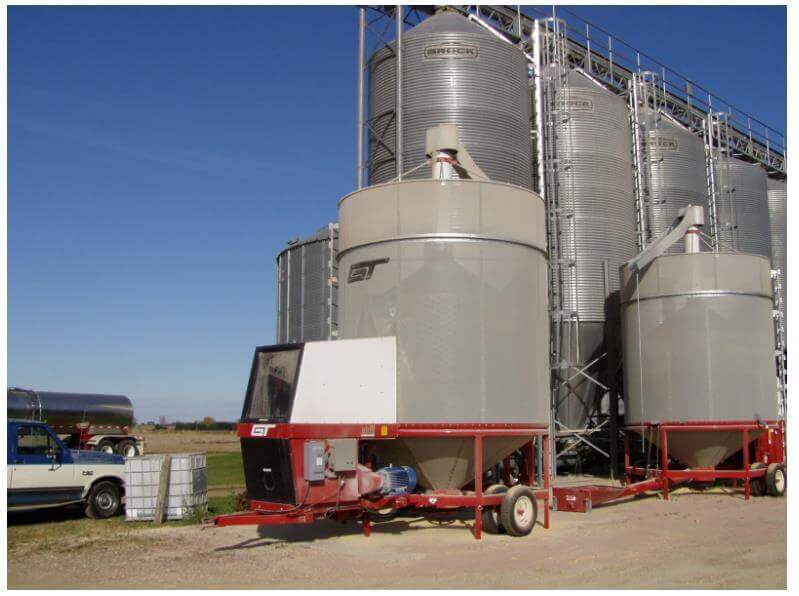
Bin dryers are one of the simplest dryers to operate. These dryers come with perforated floors and blowers that aids in the movement of air along the grain. If the grain consists of 22 percent or less moisture, it can just be dried using ambient air, as long as there is adequate airflow.
10. Belt Dryers
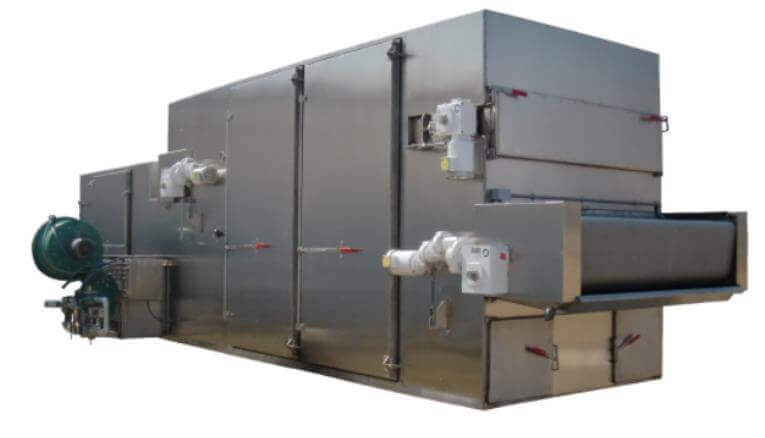
Belt dryers are machines that are quite helpful when you need to continuously dry and cool materials, such as panels, woodchips, molded compounds, pastes, and pallets using air, flue gas, or even inert gas.
11. Vacuum Dryers
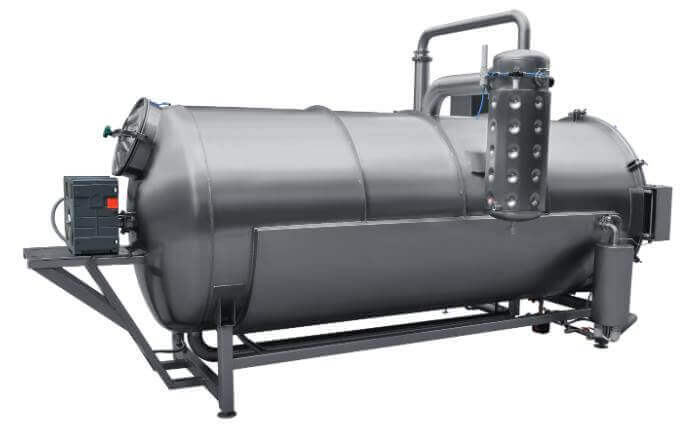
Vacuum dryers are almost the same as tray dryers, except that these dryers use the vacuum and the transfer of heat is through radiation or conduction. The trays in the vacuum dryers are always put together in a large cabinet, and the water vapor generated is condensed. When the water vapor has condensed, the pumps will only handle the non-condensable gases.
12. Freeze Dryers
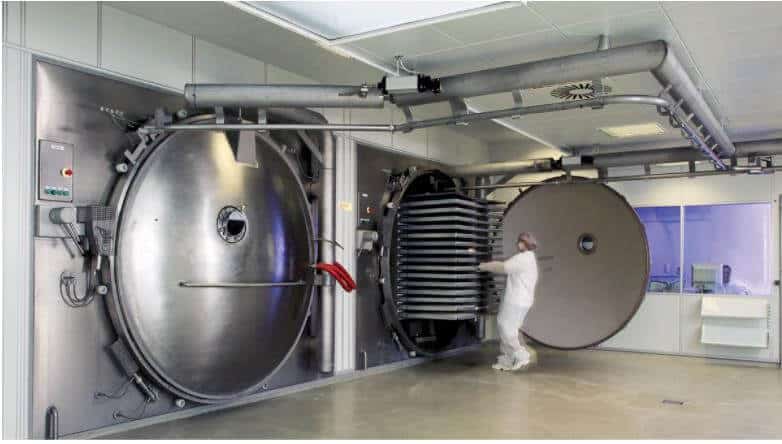
Freeze dryers are also known as lyophilizer. These dryers help with freezing materials while reducing the pressure and topping up some heat to give room for the material you are freezing to sublimate.
Rotary Kilns Vs. Rotary Dryers: What’s The Difference?
Most people quite often confuse between a rotary kiln and a rotary dryer. Sure, both of these machines share the same working principles, but they are different when it comes to where they are used. Rotary kilns can dry, but they are better suited for heating and not drying.
Rotary dryers are suited for drying materials. They can operate between temperatures ranging from 800 degrees to 1400 degrees F. Rotary kilns, on the contrary, cause chemical reactions, and that is why they operate at very high temperatures, ranging between 1000 degrees and 3000 degrees.
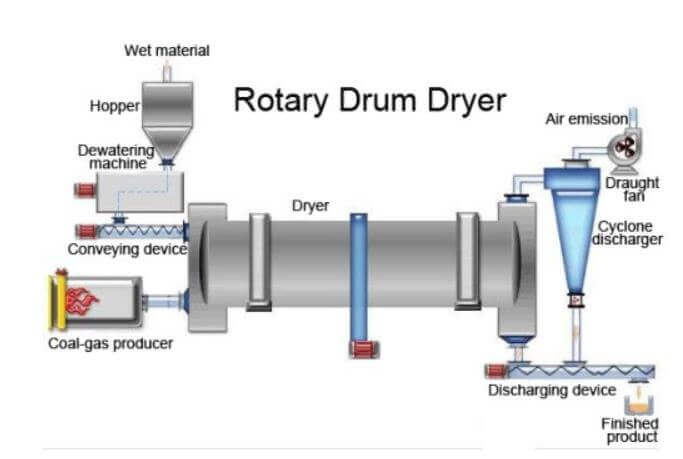
That said, rotary kilns are built to sustain much higher temperatures than rotary dryers. If you are using a direct-fired rotary kiln, you will realize that it is lined with castable linings or refractory lined with brick. On the other hand, rotary dryers aren’t lined, and they cannot sustain higher temperatures. However, you need to note that indirect rotary kilns are usually not lined. That means that its drum shell will be built from a temperature-resistant alloy rather than steel.
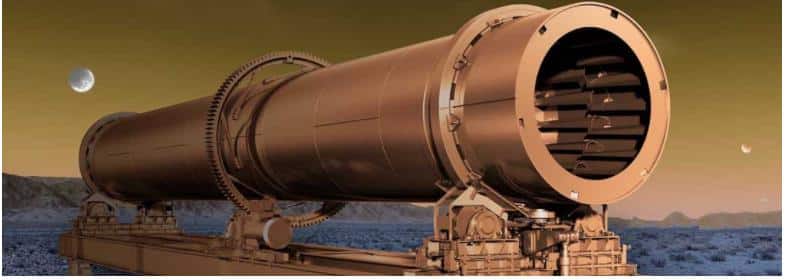
Before you purchase a rotary kiln or a rotary dryer, you need to determine whatever you will be doing with any of these. If you are looking forward to drying any of your materials, then a rotary dryer will be of much help. If you are looking for equipment that would cause chemical reactions and heat your materials, then a rotary kiln will serve that purpose.
Difference Between the Rotary Dryer and Centrifugal Dryer
Back then, rotary dryers and centrifugal dryers were almost the same things. Until recently, some companies started building dryers with both rotary dryers and centrifugal dryer functionalities in them. While this combination has made drying more practical and accurate, there is still some confusion that we need to clear up.
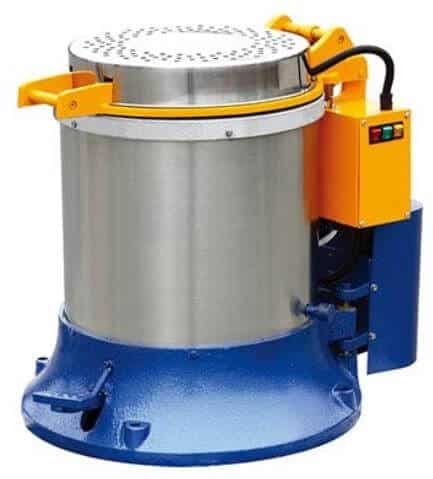
Rotary dryers consist of rotary drums and have separate heating facilities. On the other hand, centrifugal dryers leverage superheated and dry steam to dry materials.
Benefits of Using a Rotary Dryer
Today, industries rely on rotary dryers to help with consistent and high-capacity drying of materials. And it’s no surprise that industries now use rotary dryers more than ever.
Rotary dryers offer many benefits, especially when you are processing solids. Below are some of the reasons why you should choose rotary dryers to help you with the processing of bulk solids:
1. Custom Processing Capabilities
Sure, you can still get one-size-fits-all rotary dryers, but most of the rotary dryers are customized to increase processing efficiency.
For example, you can design unique specifications and try to tweak your overall goals to get the best out of your rotary dryer. It is essential to emphasize that different material characteristics can influence how a material will behave when being dried.
Additionally, the material’s characteristics will affect the dryer design, thus ensuring the thermal processing’s satisfaction. When you want to design a rotary dryer, please keep in mind the following:
- The moisture of the raw material
- The goal of the outlet moisture
- The current heat of the material you want to process
- The properties of the material you are processing
- The shortcomings of the material you are processing – fragility, particles, etc
- The surface quality of the material.
It is essential to note that how a dryer performs can be influenced by site-specific factors, and that is why you should also take it into account. Some of those factors may include ambient temperatures, humidity level, and elevation.
There are many components that you can customize to meet your processing needs. For example, several factors will affect how your dryer works and even the overall goal. These factors include percent fill, airflow configuration, size, pattern, and retention time. You can also do a few tweaks, such as sealing the options, knocking the systems to improve the drying efficiency.
2. You Can Create a Refined Product
If you intend to dry materials, such as granules or pellets, then rotary dryers will offer many benefits than when you use other dryers. The tumbling action is the critical process because it polishes the granules while knocking loose edges to produce a more refined product.
3. Heavy-Duty Processing
Rotary dryers are healthy and come with a heavy-duty design. Sure, rotary dryers can come in handy when you want to process more refined materials, but they are better suited for processing heavy materials.
Because of this, most materials processed using a rotary dryer will include ores, potash, limestone, phosphates, minerals, and gypsum. The best of all is that rotary dryers can last for ages before you replace or repair them.
4. Consistent Processing
Apart from the fact that rotary dryers can handle heavy-duty processing, there’s also another reason why they are so popular. Rotary dryers can consistently process high-quality products, even if there are inconsistencies in the process.
Flights in the rotating drum are responsible for lifting and cascading the material to minimize material clumps and ensuring that there is even drying of the material. The best of all is that they can take what is available – whether uniform or lumpy, dry or wet, but still end up with a quality product.
5. High Capacity
Because rotary dryers utilize a larger footprint than their predecessors, they provide significantly higher capacities. Rotary dryers can provide accommodations from as low as 1 ton per hour, all through 200 tons per hour. For this reason, high capacity processing is essential in many processing conditions.
6. Energy Reduction
Less energy is typically essential in rotary dryers compared to other drying options like fluid bed dryers. Additionally, they offer the chance to reduce energy costs while operating at lower capacities. For instance, fluid bed dryers need a certain amount of energy, even when working on reduced degrees.
This is because it requires a certain amount of energy to fluidize the substance. Energy consumption is also minimized with a rotary dryer without interfering with the process at reduced capacities.
With a rotary dryer, heat transfer efficiency is enhanced through lifting flights. Once the lifting flight picks up the material, it releases it to the airstream, creating a shield of material as the drum spins. Meanwhile, displaying the material to the airflow refines moisture and drying leveling.
7. Ease of Performance
Rotary dryers provide relative manual operation. While it’s necessary to monitor a rotary dryer, one or two things can lead to upset when running a rotary dryer. Also, there are a few variables that need to be modified to allow for ease of performance.
8. Direct and Indirect Heating Alternatives
Most rotary dryers are direct-fired, which means that the material and drying air directly contact one another. However, when the processed material must not come into direct contact with the drying air, indirect-fired rotary dryers come in to provide an effective precessing solution.
As of indirectly heated dryers, the drum is heated externally, and the material is dried through contact with the drum shell. This prevents any direct connection between the material and the drying air. An indirect dryer is useful when the transit of ultra-fine material is a concern.
Frequently Asked Questions
1. What should I look for when buying a dryer?
Essential features. Such include dryer sensors or dryer moisture that regulates the drying time required. It also lets you custom select options with similar benefits to help alleviate drying time and energy consumption. Temperature management will also facilitate the drying process of some fabrics, including fluff for delicates.
2. Is it worth fixing a dryer?
The dryer machine typically lasts up to 13 years. To enhance the dryer’s life span, make sure to clean the lint trap and outer vent after each use.
If a dryer is relatively new, then it’s worth repairing. This way, you can extend your dryer’s shelf life and save money eventually. For example, it can be worth spending up to $200 to repair a midrange dryer with less than five years of performance.
If your dryer is approaching ten years of performance, it is best to replace it, even if you haven’t encountered any significant problems yet.
3. How do you know when your dryer is going out?
- If the drum isn’t turning, but the dryer runs when turned on, you could be having issues with the belt.
- Insufficient supply of heat.
- The dryer isn’t starting.
- Banging noises which can be irritant.
- A grinding or squealing sound is produced.
- Dryer jams in the mid-cycle.
4. What causes the heating element to go out in the dryer?
A dryer heating component runs on the same technique as the coil in an electric heater. If the coil overheats, it burns out. Other conditions that can cause the heating element to stop include inadequate airflow in the heating compartment, power surge, and failure of safety gadgets.
Introducing the Tcpel Rotary Dryer Machine
Now that you know more about what rotary dryers are, how they work, and some of the advantages, you probably want to know some of the best rotary dryers in the market, right?
The Tcpel Pellet Mill Rotary Dryer Machine is one of the best rotary dryers we have ever seen. This dryer comes in handy when farming when handling animal husbandry duties, among others.
You can use the Tcpel Pellet Mill Rotary Dryer Machine to dry items, such as sawdust, wood chips, cotton straws, soybean straw, wheat straw, sorghum culm, mulberry leaves, among others.
But that’s not all about the Tcpel Pellet Mill Rotary Dryer; below are some unique features of our rotary dryer machine:
What are Its Unique Features?
- Better for drying biomass, fertilizer, animal feed powder
- It comes with a rotary drum that helps with drying high humidity materials, such as sawdust straw, animal feed materials from maize, cereal fertilizer, etc.
- You can control the dryer drum, depending on the raw material’s humidity. Higher humidity calls for lower feeding speed.
- It comes with temperature adjusting equipment to help with adjusting the hot air temperature.
- This rotary dryer comes with multi-angle lifting style plates to help raise the material evenly.
Bottom Line
Rotary dryers are the pillar of many advanced industrial operations to wrap it up, helping to alleviate processed goods’ moisture content while preparing materials for enhanced processing. Also, they are beneficial for both their final products and the process itself. Rotary dryers are available in regiment models but can be tailored to fit the eccentric characteristics of the material under processing to deliver the most efficient results.
Talk to An Expert
SHARE THIS POST
Talk to An Expert
